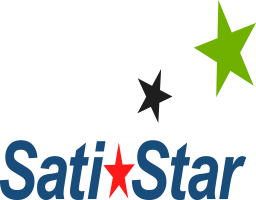Design of Experiments (DOE)
Overview
Design of Experiments (DOE) or Multivariable Testing (MVT) as it is sometimes known is a simple and incredibly powerful tool to rapidly test many ideas simultaneously. The power of the method lies within its ability to collapse hundreds or thousands of trial and error experiments that would otherwise be required to optimize your business, into a small number of highly structured experiments.
The outcomes of a DOE include proof of which specific ideas or combination of ideas will have the greatest business performance improvement impact. DOE will also indicate which improvement ideas have little or no impact, so that you can safely redeploy or eliminate such business resources without fearing any adverse consequences. While DOE has historically been the realm of statisticians and engineers, our methodology is simple enough for shop floor employees to feel comfortable in using the method.
Approach
Training is divided into three phases:
In phase 1, a team is assembled to:
- Determine the process for which improvement will have a big bottom-line impact
- Decide upon the output measure(s) for the process (the response variable).
- Ensure that the measurement system is satisfactory
- Do some basic statistical process control to ensure that the process is stable
- Address any obvious potential solutions
In phase 2, a team is assembled to create the experimental design:
- Assemble as many people who may have any thoughts on what would affect the output variable. This often includes suppliers, customers, outside experts, and most importantly the employees who work within the process (production, maintenance, engineering, supervisory, etc.)
- Brainstorm improvement ideas. This often results in hundreds of ideas.
- Narrow the list of brainstormed ideas down to the critical few that are practical, feasible, cost effective and rapid to implement. This typically reduces the large list down to between 5 and 25 ideas (or input variables) on which the experiment will be run.
- Studies have shown that only 25% of these ideas actually improve the process output. 53% make no difference, and 22% actually make the process output worse! Clearly it is important to test as many ideas as possible to increase your chances of finding those that enable you to achieve dramatic breakthrough.
- Select the high and low values for each of the input variables for the experiment.
- Select the type of experimental run plan. The key point is to keep the process output on average, exactly where it has historically been, but increase the overall variability of the output.
In phase 3, the team runs the experiment, collects the results and implements improvements:
- Production employees run the experimental runs through the regular production equipment.
- Data is collected on the experimental results.
- A rapid analysis is performed on the resulting data.
- Process changes are quickly implemented
- Confirm that the changes worked!
DOE is just as applicable to front office and transactional processes as it is to shop floor processes. We have used DOE for applications as diverse as increasing retail sales, driving up magazine circulation, and driving down accounts receivables.
What You Will Learn
- How to choose the target process for application of DOE.
- Selecting the team.
- Brainstorming potential improvement ideas.
- Selecting the critical few.
- Determining the experimental range for each of the selected few factors.
- The types of experimental run plans.
- How to select the most appropriate run plan.
- Ensuring the process is stable.
- Running the experiment.
- Analyzing the data.
- Implementing process changes.
- Measuring process improvement.
Training Outcomes
This course is primarily targeted at anyone who is in the position of implementing extremely rapid and breakthrough changes to the output of manufacturing, service and administrative processes. Others who may consider attending would include organizational leaders who wish to learn about the value that DOE can bring to your company’s improvement process.
WHAT PEOPLE ARE SAYING
SatiStar's Experience Makes The Difference!
